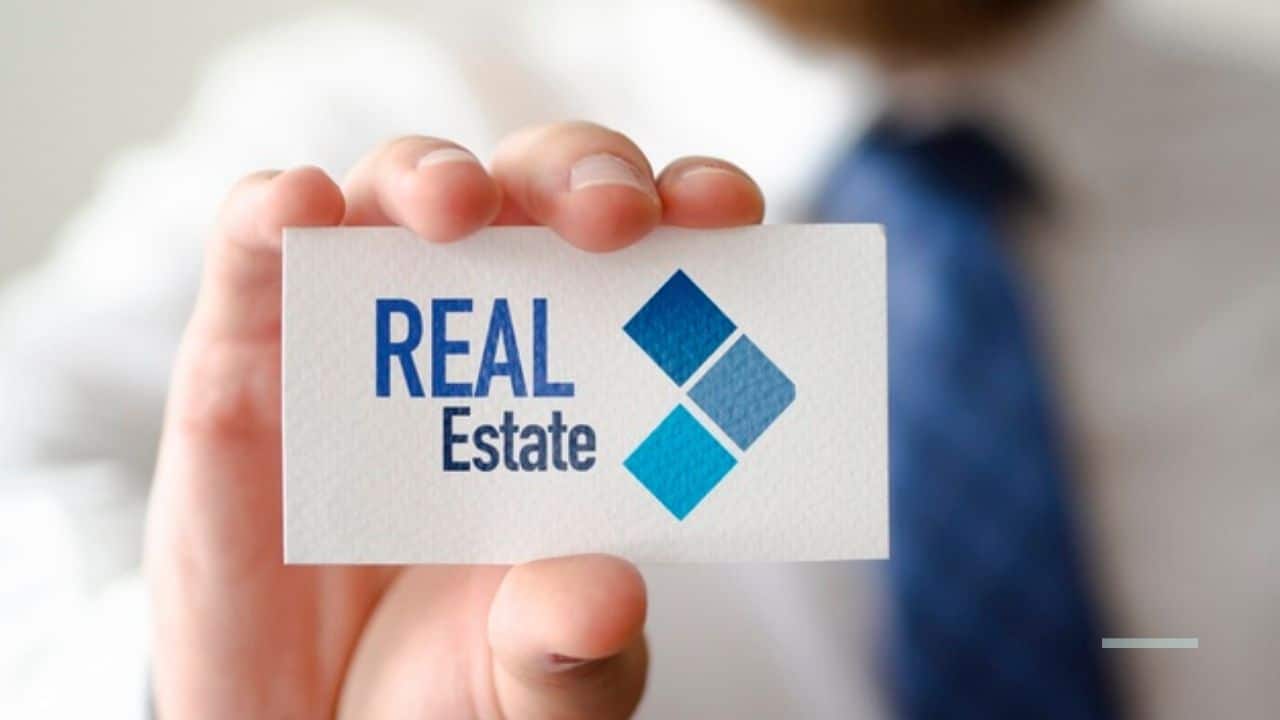The real estate process may be time-consuming, frustrating, and full of back-and-forth negotiations between a seller and buyer if it is mismanaged. However, if you, as an agent, can optimize the real estate sales process, you will not only save time but will also be able to close deals faster. Not only that, but properly handling the real estate sales process can ensure that a seller will return to you the next time they want to sell another home. Let’s take a look at how you can dominate the real estate sales process as an agent, from listing to closing, and keep buyers (and sellers) on your side.
From Listings to Closing: The Real Estate Sales Process
Let’s take a look at how you as an agent can dominate the real estate sales process, from listing to closing, and keep buyers (and sellers) on your side.
- Preparing a sales listing
- Set your price.
- Arrange for property viewings.
- Close the deal.
- Complete the transaction.
Step 1: Preparing a sales listing
It is easier to prepare a real estate sales listing if you divide it into three sections: what to prepare, how to stage, and how to advertise.
Before you begin the real estate sales preparation process, be sure you have a method for organizing it that is constructive. After all, you’re about to juggle many clients/properties with a variety of information that you can’t afford to get mixed up.
Using a CRM program is an excellent method to remain on top of your property and client research. These tools make it simple to track your relationships by outlining the stages of your process. A CRM solution allows you to manage emails and phone calls, reduces data admin time, provides a streamlined perspective of your process, and much more. Best of all, they are entirely adaptable to your requirements.
As a realtor, you may create distinct pipelines for each property and watch the progress of purchasers who express an interest. The following is a real estate sales closing checklist:
Part 1: Get Ready
It may surprise you, but as a realtor, you must perform research on your seller. The stronger the relationship, just like any other sales relationship, the better the chances of obtaining the desired objective.
Inquire about the seller’s property, their motivations for selling it, and what they want to gain from the process.
This will not only enhance your relationship but will also give you a feel of their eagerness and estimated schedule for the transaction.
Other things you should ask the seller at your initial meeting include what their financial expectations are for the property, as well as requesting that they provide paperwork such as tax, title, and insurance for the property (make sure you make copies of these documents).
If there are any skeletons in the property’s closet (such as unpaid taxes), now is the time to find out so you don’t get a nasty surprise from the seller later on.
For example, if the seller’s property has a claim against it, you must notify them that this must be resolved before the property is sold. Similarly, if the seller has not reported a title dispute, now is the moment to be forthright.
The last thing you want for your real estate agency is a jilted family or a tax-collecting agency that is owed money, generating problems once the keys are handed over to a buyer.
Once all of the seller’s title, tax, and insurance documentation is in order, you can put the property on the market.
Tip: If a seller is conversing with other agents about selling their home, ask to be the final real estate sales agent they speak with. It will be easier to bring them on board this way because you will be able to unpick the processes of other agents.
Part 2
You need to make the seller’s property as appealing to potential purchasers as possible now that you’ve established a relationship with them. The easiest way to accomplish this is to advise them to properly present their property.
Staging a house not only makes it simpler for a buyer to see the property as their future home, but it also helps the property sell faster.
In fact, staged homes spend 90 percent less time on the market than unstaged properties.
Of course, as a realtor, you will have to encourage your seller to do this. If they are hesitant to stage their home, tell them of the financial consequences if they do not.
Unstaged homes are on the market for 161 days longer than staged homes. However, if you break it down into monetary terms, failing to follow your advice might cost your seller thousands of dollars.
Tip: Send your seller this virtual checklist to help them to sweeten the deal of staging. It’s a simple approach to let your seller know what you want from them before staging their home without being overbearing. (If you’re using a CRM, simply store the checklist as a trigger in your real estate sales funnel, and it will be immediately sent to your seller.)
Part 3: Publicize
When the property is in pristine condition and images have been taken, it is time to open it to the public.
Buyers search for their new house using a variety of channels, according to the National Association of Realtors Profile of Home Buyers and Sellers, although online sources are the most preferred.
As a realtor, you should promote your seller’s property through web platforms. The first thing you should do is list the property on the Multiple Listing Service (MLS).
You should also base your marketing strategy on the MLS listing. Your next step will be to promote the property on your agency’s website before going on to social media.
Here is a simple checklist of promotion activities to consider:
- Multiple Listing Service in Your Area (MLS)
- Website landing page for your real estate agency: With staged photos, your contact information, and a call to action (i.e. book a viewing)
- Social media platforms: These include, but are not limited to, your agency’s Facebook, Instagram, Twitter, Pinterest, and LinkedIn profiles.
- A personalized blog article promoting the property on your agency’s blog: With a summary of the property’s outstanding features and fittings, staged images, your contact information, and a call-to-action (i.e. book a viewing)
- Traditional mailouts: These can just be a physical copy of your property’s landing page. Traditional mailers can be used to persuade buyers who do not have access to the internet.
Tip: Make sure your agency’s branding is consistent across all marketing channels. You’re not simply selling your client’s property; you’re also promoting your agency. You must communicate this via your marketing campaign. When you employ low-quality marketing materials to represent your company, you risk tarnishing your brand. Make sure you invest properly in campaigns.
Step 2: Set your price.
Without a doubt, the most crucial aspect of the real estate sales process for you as a real estate agent is pricing your seller’s home.
Any reputable real estate sales agent understands the importance of avoiding delighting your seller at this stage. Instead of pricing a home based on what the seller wants (which is against the code of ethics of a real estate sales agent), you should price each property based on your training, overall market understanding, and similar sales.
When a home is too cheap, the seller not only loses money, but the public may interpret this as a hint that there are problems with the property. This can have a significant impact on the level of interest in acquiring a home.
On the other hand, an overpriced property will turn off purchasers who simply cannot afford it (even if it is exactly what they are searching for).
A comparative market analysis is the only approach to determine the correct price for a property.
How to Perform a Reliable Comparative Market Analysis For a Real Estate Sales
When performing a comparative market analysis, there are numerous characteristics of a property to evaluate.
Begin with the most evident elements of the property:
- The cost of comparable residences in the same neighborhood that has recently sold and are of comparable size and features.
- Any renovations or upgrades made to the property by your seller
- At an auction, features such as a swimming pool or a large yard space are more valuable.
- How much do other properties on the market cost per square foot?
- What is the state of the market in which you are selling the property? Is it a balanced market with both buyers and sellers?
To ensure you get the most realistic price for your seller, you must go beyond the fundamentals.
Your initial step should be to look at postings in the area. Divide them into four categories: active listings, pending listings, sold listings, and withdrawn listings.
Active Listings:
Any property that is actively for sale will come under this category. Make sure you only include listings directed at buyers who could be interested in your seller’s property. Please keep in mind that active listings should only be used as a general guideline. Keep in mind that any price listed for an active listing does not reflect its market worth until it sells.
Pending listings:
These are listings that have been under contract but have not yet closed. Unless you have a real estate link engaged in the sales, a listing agent is unlikely to give you any information regarding the pending sale’s price. That implies you’ll only be making educated guesses until the property closes. Pending listings, on the other hand, might offer you a good picture of where the market is heading.
Sold Listings:
This is where the numbers start to matter. A comparable sale is any property that has closed within the last three months. These sales will provide you with a true market value, and you should look at three to six months of comparable sales data to arrive at a reliable figure for your seller’s property.
Withdrawn listings:
The least important of the four; withdrawn listings are properties that have been removed from the market. The most common reason for this is that property was overpriced, and the real estate sales agent was forced to withdraw the listing and examine it. As a result, the average price of a withdrawn property is usually always greater than the average price of similar sales.
Tip: A real estate CRM tool can assist you in tracking these listings by integrating all of this data into a single, simple-to-use platform.
Once you’ve established a solid foundation for your comparative market analysis, go over any comparable sales you’ve come across in further depth. Maintain a straightforward approach. Look for properties that are similar in terms of condition, shape, and size. Here are some suggestions to make things easier:
Size-related properties:
This is calculated per square foot. Keep in mind that larger homes are typically valued less per square foot than smaller homes. In this scenario, little is more. Allow only a 10 to 15% margin of error between comparable sales and your seller’s property; otherwise, the data may be erroneous.
Properties of the same age:
This one necessitates further investigation. However, try to determine whether the property is of a similar age to your seller’s. Ideally, any similar sales should have been constructed within a few years of your seller’s property.
Properties with similar characteristics:
Is there a pool on your seller’s property? Or have they purchased a new kitchen? When evaluating features, it’s a good idea to check to see if it’s been remodeled. A refurbished home is worth more than a fixer-upper, while a home with one bath is worth less than a home with two baths. Remind your seller that addressing any maintenance issues before listing their property for sale can frequently earn them more money during the transaction.
Location:
Take a realistic look at your seller’s property’s location. What kind of view will a potential buyer get from each window in the house? A city center apartment, for example, with any kind of view, will be far more valuable than one facing a brick wall. If your seller’s property is near a highway or a busy road, this will be deducted from the asking price.
Only once you’ve completed all of the essential research on a property will you be allowed to create a report for the seller.
There is no standard size for your report (it could be a few pages or a 50-page PDF). However, the more detailed it is, the more you will be able to persuade your client that your price is the best option.
Step 3: Arrange for property viewings.
Once you’ve decided on a price and begun marketing your seller’s property, it’s time to begin looking for a buyer.
You could already have a buyer in your contacts. They could be new or old leads, or new or existing clients looking to advance in their careers. A real estate CRM application is an excellent approach to organizing your contact list.
You can, for example, review your CRM list and tag your contacts. Use these tags to categorize your contacts as warm or cold leads. You may then set up a reminder to invite them to the open house.
The optimum strategy for home viewings is to provide two options: an open house and a private showing for buyers you’re seeking to close.
Let’s begin by looking at the open house strategy in the context of the real estate sales process.
#1. Organizing an open house
As a result of your promotional strategy, you should have a robust list of interested buyers. These lists would have been generated automatically based on your website’s call-to-action, social media updates, and blog.
Tip: If your company uses a real estate CRM, sending out open house invitations will be a breeze. Simply filter out real estate prospects who filled up their information to attend the open house and send an email using a predefined design.
Once you’ve booked your open house, make sure to stay in touch with the seller to ensure the home is in tip-top shape for the big day.
During the open house, your job is to find any possible purchasers who have expressed an interest in the home. Keep a notepad nearby and jot down whatever they discuss, such as their relationship, their interest in a sport, their ideal property location, and what they appreciate about the seller’s property. Make a list of everything and enter it into your CRM system.
This will not only help you determine how likely they are to become a serious buyer, but it will also provide you with ammunition to follow up with them with targeted communications.
#2. Follow up with prospective buyers to schedule private viewings.
That notepad you carried with you to the open house?
Now is the time to put it to use. Use your CRM system to log your emails and phone calls with potential buyers so that the complete interaction is stored in a single, easy-to-find location. You can also use smart templates or create your own to make email follow-up and response time efficient.
Contact any potential buyers you met at the open house and, using the information you gathered, give them a personalized invitation to a private viewing.
Here’s an example of an open house follow-up email:
Here’s an example of a fantastic open house follow-up email:
Hello (name of the interested buyer)
I’m just writing to say how much I enjoyed talking with you yesterday and to solicit your thoughts on (open house address). You (and your partner’s name, if they have a partner) indicated a desire to make (open house address) your new home, so I’d like to speak with you about it more.
Here are a few more features of the property that would make it an excellent choice for you (or both of you).
(Based on what you learned throughout the conversation, list some of the reasons why the property would be a good fit for them. As an example:
If they have children, they should consider attending a local school.
Links to public transportation (particularly if they commute)
If they have a dog, they should visit a nearby park.
Our real estate agency frequently deals in this neighborhood, and I can tell you that (location of property) is unique to the region due to (include unique selling points). I’d be delighted to tour you around the property for a private viewing so you can get a more personal feel for it before the bidding closes.
Properties like (open house address) have been a specialty of mine as a realtor who has been in the field for (add the number) years.
If you have time to see me and discuss the property further, I’ll be in the neighborhood on (day and hour). Please let me know so that I can organize a viewing.
Best wishes,
(Enter your name here)
Step 4: Close the deal.
Once you’ve snagged a buyer, the commercial conversations can commence.
Negotiating a sale as a real estate sales agent may be a difficult and tense experience. It is your responsibility to manage any offers and counteroffers from the client. The goal here is to get an agreement on a property’s price and parameters as quickly as possible without hurrying either party.
You must also manage the sale so that it does not consume too much of your time. A CRM system can help you manage your time more effectively.
You can, for example, save time and keep organized by:
- Changing the status of your potential buyer’s deal from “proposal made” to “negotiations started.”
- Setting up reminders and notifications for following up with prospective purchasers.
- Tracking when a potential buyer receives an email and whether or not they click on any links inside it, allows you to determine whether to follow up.
A potential buyer would simply agree to pay the asking price in an ideal world. However, if there are multiple purchasers interested in your seller’s property, you must compare the bids.
Buyer bids will differ, but keep an eye out for the following:
- Whether or not they have agreed to pay the desired amount
- If the prospective buyer has received financial pre-approval,
- What date have they specified as an occupancy/closing date?
- If the potential buyer has submitted a list of items that they want to be addressed before agreeing to the sale (repairs, pest inspection, etc.)
Tip: Add these facts to your prospective buyer’s profile in your CRM to make them easier to find and filter through.
Before you consider a possible buyer as the ideal individual to take over your seller’s property, you must first ensure that they are qualified.
Part 1 Qualify the possible buyer.
There is a distinction between being interested in purchasing a home and being qualified to do so.
Before proceeding with a possible buyer, ensure that they have a mortgage pre-approval (do not confuse this with a mortgage pre-qualification). Only during the pre-approval step will a buyer’s credit, job, and income be checked.
If a potential buyer has simply brought pre-approval documents to the table, you should be careful of considering their offer with your seller. It will be a much faster real estate sales process for you and your seller if you only consider purchasers who have completed the paperwork and been approved for a mortgage.
A pre-approval, as realtors are aware, reveals vital information such as the maximum loan amount a potential buyer is eligible for, the duration of financing, and down payment amounts. You can stay on top of all of this paperwork by entering it into your CRM system. View your client’s profile on your mobile CRM to conveniently refer back to these statistics when bargaining with the seller while on the road.
If they pass all of the tests, forward their offer to your seller for consideration and update the label in your CRM system to stay organized.
Tip: At this point, you should alter any property promotion you’re conducting (on your website, blog, etc.) to highlight that it’s “under offer.”
Part 2 Accompany your seller to the appraisal.
The house evaluation of your seller’s property will come next, which you should always attend.
Because an appraiser will not know the property as well as you or you must be present to address any questions they may have.
Appraisals are one of the last barriers your vendor must overcome. It will have a significant impact on the price of their home, so you must be present to inform the appraiser of any upgrades or improvements done by the seller that may influence the final price of the property.
Step 5: Complete the transaction.
The final steps in closing your seller’s property include a final inspection, supplying the buyer with the necessary papers, and finally—removing the property from the market.
It’s time to advance the deal to the final stage of your CRM. You can plan tasks and create goals to ensure that nothing is overlooked. It’s the final countdown, and a CRM system may help you cross the finish line with ease.
Part 1: Arrange for a final inspection.
A final inspection is the buyer’s final opportunity to point out any flaws in the property.
Real estate regulations oblige you (as the sales agent) and your client (the seller) to offer full information to the buyer about any flaws at the property. If your seller fails to comply, they will be held liable for any defects, so make sure you keep the buyer informed.
Obviously, the seller and buyer must agree on a final inspection time. However, the sooner the better to keep the real estate sales process rolling. A trained inspector must be hired by either you or your vendor to generate a final inspection report. Make sure whoever organizes the inspector knows you’ll be there. Inform your seller and buyer that a typical final inspection can take up to four hours, depending on the size of the property and that they should clear their schedules accordingly.
Make certain that you are present for this inspection a well so that you can guide your seller and buyer through the process.
Do you believe this isn’t necessary?
Yes, it is.
The property must be inspected from top to bottom, beginning with the rooms and features and ending with the foundation and rooftop. Check that the air conditioning and heating systems, as well as all of the plumbing and electrical outlets, are operational throughout the home (and any appliances that have been included in the sale).
Finally, the inspector will examine your buyer’s property’s foundation, room, walls, windows, and any other structural elements.
Part 2: Handle the final negotiations on your seller’s behalf.
Following the property inspection, it is up to you as a realtor to negotiate the final negotiation for your seller. Typically, the buyer will have their own real estate sales agent with whom you will negotiate, but you may negotiate directly with the buyer.
Keep in mind that a final negotiation isn’t always required. If the buyer was provided correct information and there were no surprises during the final inspection, probably they’ll be glad to pay the original amount.
If the buyer discovers flaws in the property, it will be your responsibility to handle the discussions. So, if this occurs, the best method to reach an agreement is to negotiate a compromise.
Sometimes the seller may have to accept a lower offer than they had hoped for, but remind them that it is a better solution than having the property linger on the market for the foreseeable future.
Tip: You and your seller can avoid a final negotiation by being as open and honest with buyers as possible throughout the real estate sales process.
Part 3: Sign the paperwork and turn in any required documentation.
The following step is to sign the purchasing agreement.
A solid purchase agreement will spell out any payments and credits owed to your seller, as well as any payments required from the buyer.
Make certain that every cost is included in the purchasing agreement. This includes transactions like title and tax searches, corrections (if needed), and prepaid taxes.
The buyer’s real estate sales agent will draft a formal contract for the buyer to sign before forwarding it to you and your seller. Take the time to explain everything to your seller and go over it with them before they sign.
After both parties have signed the purchase agreement, it is time to give over the property documents to the new buyer. And there are quite a few of them.
The best method to avoid this is to collect everything from your vendor during the real estate sales process and keep it on file.
You will require the following items:
The title deed
Seller’s insurance policy: Typically, your seller will be required to ensure that the property is in before or before the final closing of the property to safeguard the buyer.
Bills for water, sewerage, and property taxes:
If your seller’s property is connected to municipal sewerage and water, you’ll need documentation that everything is paid in full for the closing. This also applies to property taxes. When the property title is transferred from the seller to the buyer, state or local transfer taxes are normally paid.
Title Certificate / Title Insurance Policy:
As a real estate sales agent, you should have reviewed titles and policies earlier in the process to avoid surprises (refer back to the very first step in this guide). Before you transfer over the property to the buyer, you must ensure that any outstanding taxes, assessments, or other concerns are remedied by the seller. The buyer is covered by the property’s title insurance policy, which protects them against potential losses resulting from property ownership issues. Both the new buyer and their lender should receive a copy of these documents.
Final utility readings:
Your seller must take final readings on any gas and electric meters in the property and present them to their service provider as well as the new buyer. This will make the new buyer’s move-in much smoother because service providers will already know your seller is no longer responsible for utilities at the home.
Any service records or warranties:
Your seller should provide any service records or warranties for any appliances or maintenance performed on the property. Any recommendations for a reputable plumber or electrician are also appreciated by the prospective buyer, particularly if they are new to the region.
Plans for plots and surveys: Finally, for the closing, the buyer will need to obtain a copy of an up-to-date survey. If your seller has misplaced them, you should be able to obtain a duplicate for a modest price from the town or city hall.
The very final step for you as a realtor is to remove the property from the market after all of the documents have been given over and all of the paperwork has been signed. Remove it from the MLS, your website, and any social media advertising you’ve done for it.
The Pace of the Real Estate Sales Process is Determined by You.
The real estate sales process can be time-consuming. However, the longer it lasts, the more money your seller will lose and the more time your agency will have to spend locating a buyer.
You should try to conclude a home transaction as soon as feasible (without the seller feeling rushed).
Organizing the seller from the beginning of the real estate sales process (staging their property and organizing their papers) can make a huge difference in how fast and smoothly the sale goes. CRM solutions can also help you streamline, organize, and automate your real estate sales process.
Once you’ve piqued a potential buyer’s interest, the key to a smoother transaction is to assist both parties with any queries they may have so that you can eliminate any objections that may impede the real estate sales process.
What Percentage of Sales Do Real Estate Agents Typically Make?
After dividing the 5 to 6 percent commission with the agent representing the opposing side, the typical Realtor commission is 2.5 to 3 percent of the home’s sale price. The agent’s broker might then need a portion of that commission.
Is Working as a Real Estate Agent Difficult?
Selling real estate for a living requires a lot of effort. In order to keep track of meetings, legal paperwork, and other chores that require many listings, you must be organized. Because the employee is frequently commission-based, you can go without a salary for a while. You cannot gain money if you don’t sell.
Do Most Real Estate Investors Fail?
Real estate success is harder to achieve than it is to say. There is a reason why 87% of real estate agents fail, after all. However, being aware of the errors these realtors make, such as neglecting to follow up with clients or lacking sufficient funds, can assist you in preparing for and expanding a prosperous real estate firm.
Why Do So Many Real Estate Agents Fail?
According to studies, the majority of real estate brokers fail within their first year. Inadequate prospecting, failing to present properties in ways that result in quick sales, and neglecting to follow up with clients are three major errors made by agents.
Real Estate Sales FAQs
Is real estate a high paying job?
Real estate provides a diverse range of vocations, many of which have the potential to earn a high salary. Top achievers in this field routinely earn more than $100,000 per year, depending on location and training.
Can I get rich in real estate as a sales agent?
There is no quick way to generate money or get rich in real estate, but you can grow wealth slowly and consistently by investing correctly. It is significantly easier to get started in real estate investing if you have cash (a 20% down payment).
How much does a top real estate sales agent make?
For example, whereas the national average yearly compensation for a real estate sales agent is slightly over $60,000, the average salary in the top-earning state is $111,800, over double the national average.
Related Articles
- FORECLOSURE LISTINGS: How to find Free Foreclosure listings stress-free
- Sewer Inspection: Video Costs, Lateral Inspection (+ overview of best Inspection company)
- Real Estate Trends: Comprehensive Market Trends 2022
- Real Estate Industry: Overview, Types & Examples
- Wholesaling Real Estate: How To Start Real Estate Wholesale (Beginners Guide)







1 comment
Danke für den nützlichen Hinweis, sich am besten ein Duplikat des Gutachtens aushändigen zu lassen. Ich werde mein Haus über einen Immobilienmakler verkaufen lassen. Mein Mann und ich werden uns dafür eine größere Eigentumswohnung kaufen.